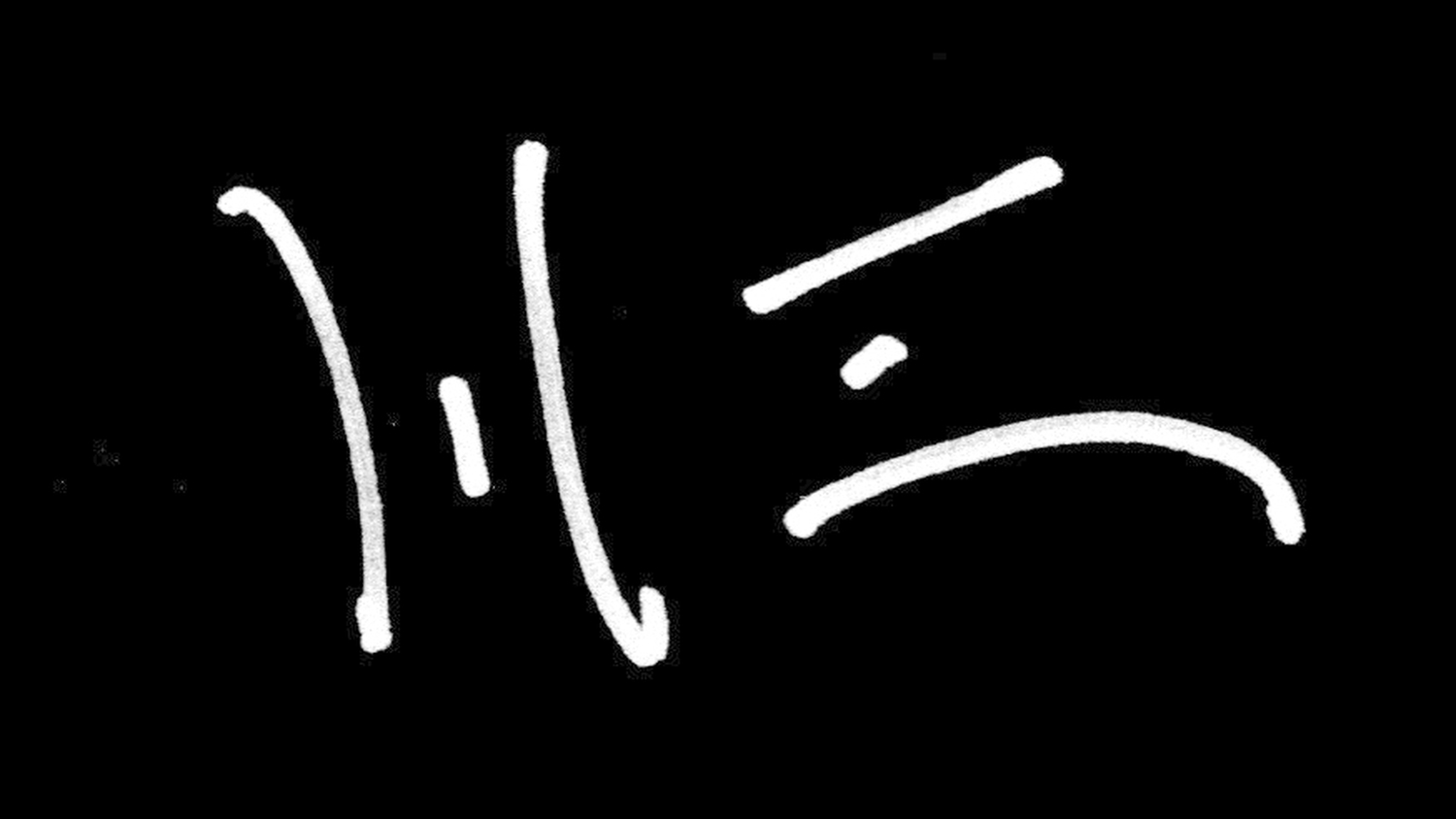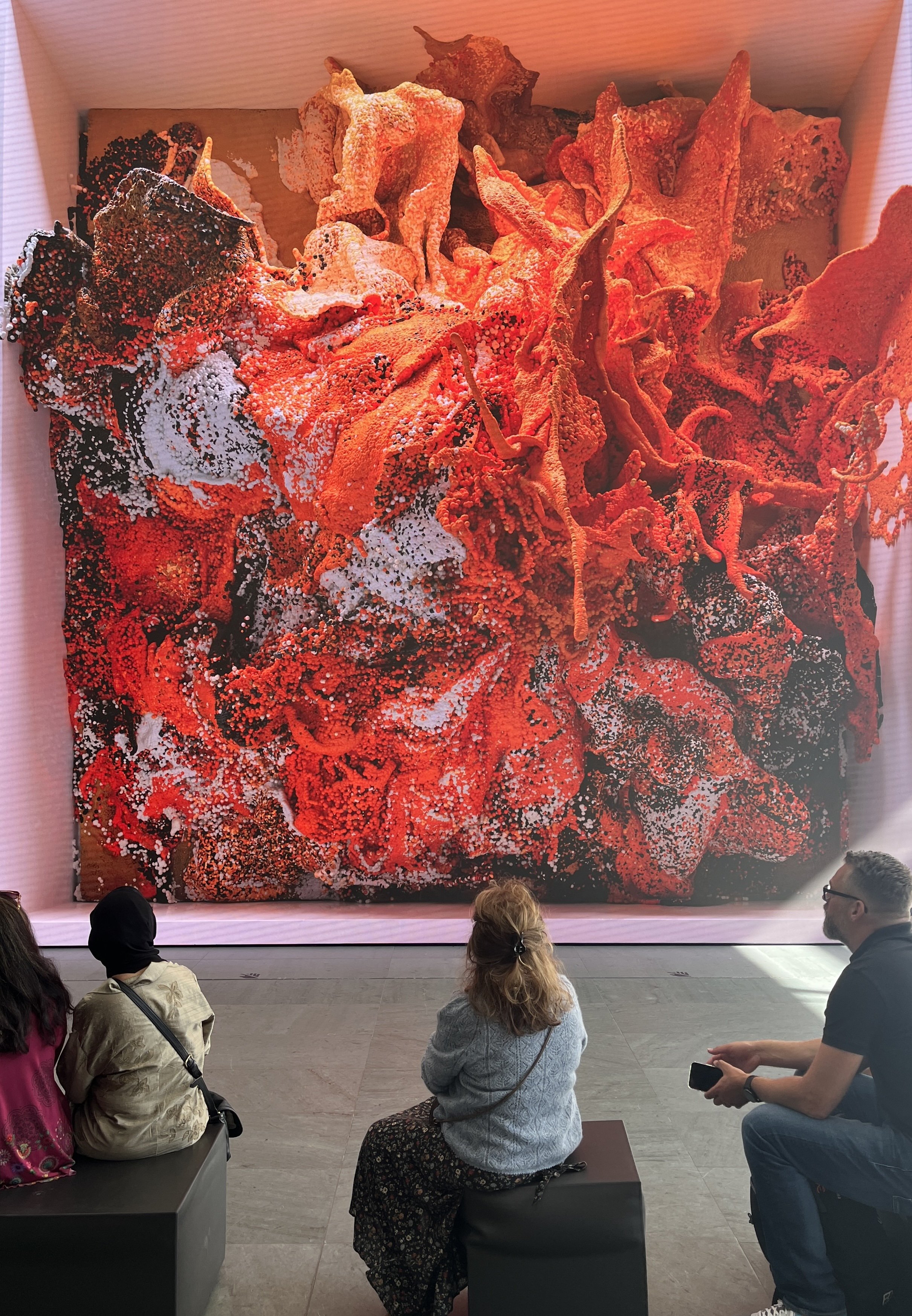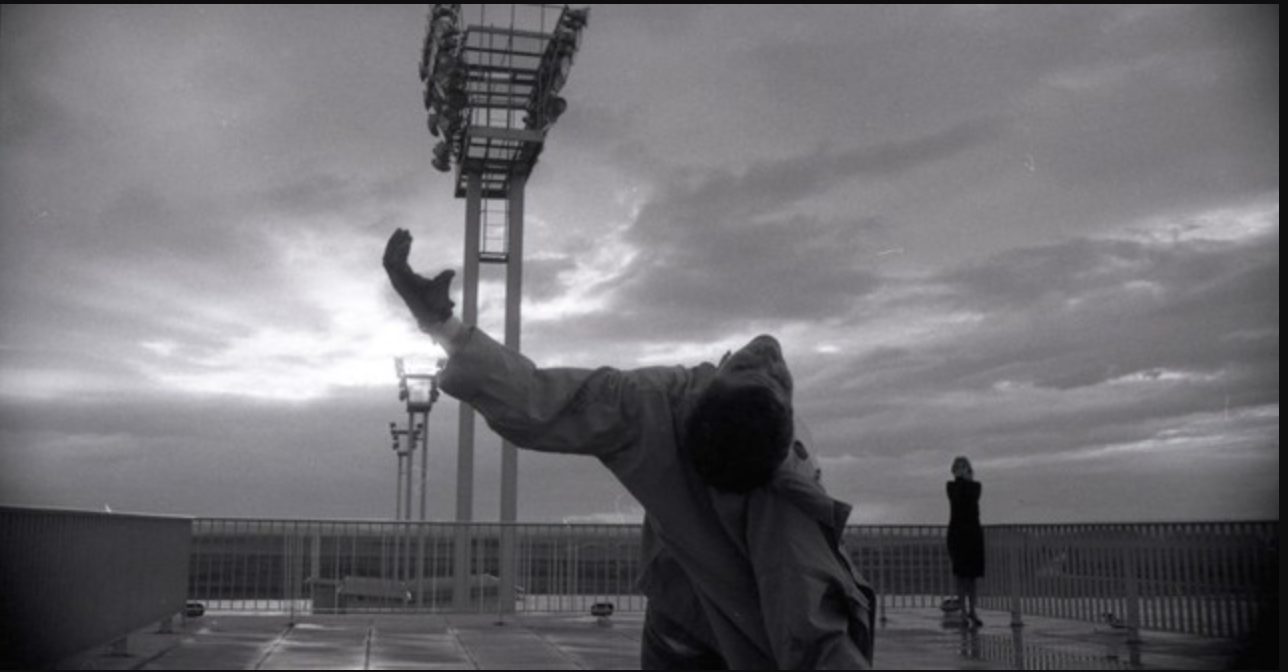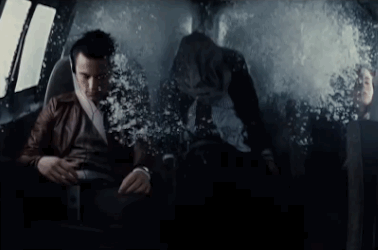On Sarah Sze, Timelapse.
1. Explain how projection is part of each installation.
Projectors are a tool for making art, like ladders or tape. The ladders and tape are in the work. The medium is the message.
2. Find out where the content comes from or is stored.
The content comes from memory. It is stored in dreams.
Computers are one of the few objects rarely seen.
3. Identify the type of projectors used.
Panasonic, LG, Sanyo, Werner, Comfort Zone, Scotch, Elmer’s . . .
The sun, the moon, clouds and atmosphere, the oculus of the Guggenheim museum . . .
4. Describe how they are set up.
They are set up differently in each iteration of the piece, different years, different locations.
Further questions:
What are the screens? What are the reflections? What is the room?
The eye searches for the center. The mind wanders in details.
What is the shape? Where does it begin and does it end?
5. What did you learn from these installations?
Montage.
A collection of fragments equals a coherent whole.
What is the connection between a rainbow and a hill of sand? Between gravity and light?
Travelers Among Streams and Cascades
Can you interpret an image / object in isolation? What is the meaning of a sunset?
The objects are generic. The images are universal. Everything repeats.
(A cardboard box; a tape measure, pliers.) (Sand; hand; color and texture.)
Can you identify yourself, your place?
A signifier operates in context. Context is subjective.
Layers of non-meaning equal an experience, a series of experiences constitute a life. Standing in a museum, walking on the street, what matters to you?
Then: a single sleeping girl. The daughter of the artist? A rare moment of specificity, individuality. What is personal, what is universal, what is a shared secret?
Moving images moving.
A river that flows like a cloud. Clouds that roll like trolleys. A cheetah that runs in place. An explosion as gentle as a bath.
The shadow of a bird upon a silhouette of a bird. Projecting darkness. Highlighting (by obscuring) the ephemeral. Making the ordinary magical.
The light of flames, the light of the moon (a reflection of the sun; not pictured), no brighter than the sea.
In the transposition of movement and time, we question both. Does time repeat? Can movement be replicated?
A Certain Slant
There's a certain Slant of light,
Winter Afternoons –
That oppresses,
. . .
But internal difference –
Where the Meanings, are –
None may teach it – Any –
(Emily Dickenson)
Can you see the wind?
Plastic plants, real shadows. The platonic ideal of a leaf.
Static, test patterns, plastic tubs of paint, the torn edge of a print -- the absence of image.
Projections on paint, like water. Paint dripping, reflected.
"Here lies one who's name is writ in water." (Keats, tombstone)
Peering through the lattice work. Is the artwork the object or the space inside it?
An unnecessarily complicated way of hanging a hammock and projector.
Planets, a constellation, celestial bodies, heavens. An observatory . . . on the ground. An inversion.
“A system of pulleys and wires to illuminate the moon with power lines.” — Brent Green.


































